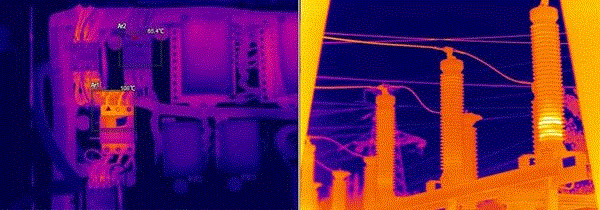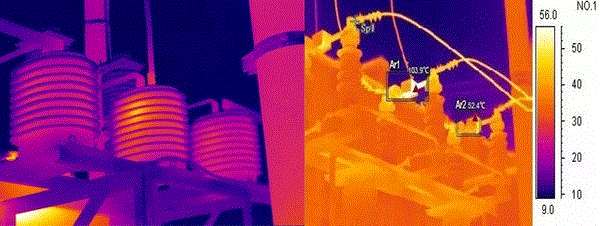In "DLT_664-2008_Infrared Diagnosis Application Specification for Live Equipment", there are six methods for judging infrared defects, namely:
1. Surface temperature
Determine the defect directly based on the temperature threshold. When the temperature reaches the threshold point, it is set as a defect, which is the easiest to judge among all defects. In most cases, it is mostly used for current heating defects.
2. Similarity comparison
Similar comparison refers to the comparison of similar equipment under inspection. The meaning of the so-called similar equipment refers to the equipment with the same type, working condition, ambient temperature and background thermal noise.
The specific method is to compare the temperature values of the corresponding parts of the similar equipment, but it should be noted that the possibility of thermal failures at the same time should not be ruled out. This method is mostly used for comparison between three-phase equipment. Normally, the comparison between ABC three-phase equipment is because the working conditions of the three-phase equipment are basically the same. If one side of the thermal image is obviously different from the other two, it can be judged that the phase is a suspected defect.

3. Image feature
The image feature judgment method is also a method that is usually used to judge voltage-induced defects. Because when defects of the same reason occur, similar image features will always appear, so when similar image features are found to appear, it is considered that such defects have occurred. The image feature judgment method can help electric power inspectors find defects in the field work, and provide solutions to the defects.
If the B phase of a current transformer has an internal defect, which results in an uneven temperature in its performance, we can not only judge the defect of the equipment, but also find the cause from the inside of the equipment to eliminate the defect.
4. Relative temperature difference
The relative temperature difference judgment method refers to the temperature difference between two corresponding measuring points with the same or basically the same condition (referring to the equipment model, installation location, ambient temperature, surface condition and load size) of two equipment, and the temperature rise of the hotter measuring point The percentage of the ratio. It is to eliminate the influence of different equipment loads and different ambient temperatures on the results of infrared detection and diagnosis.
For example, there is overheating of phase B of a knife gate, the highest temperature is 103.9 degrees Celsius, and the lowest temperature is 52.4 degrees Celsius. The maximum relative temperature difference reaches 107%, which is a critical defect. If only according to the hot spot temperature judgment method, it is a serious defect, so this method can help us judge the true defect of the equipment when the load does not reach the highest peak.

5. File analysis
The file analysis method is a diagnostic method that compares the measurement results with the infrared diagnostic technology files of the equipment for analysis. Under normal circumstances, we usually need to use a database to make comprehensive judgments. We suggest our ZIP Technology's thermometer.
6. Real-time analysis
Under normal circumstances, the defects of the equipment are easy to change with the change of the load. When the load of the equipment is low, the defects are not easy to be exposed or even disappear. When the load is high, the defects are easy to be exposed or even more serious. So we can use some online monitoring equipment for long-term monitoring of important equipment.